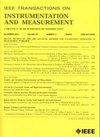Fault Distance Estimation of Coal-Mine Pulling Cables by Steady-State Electrical Measurements
IF 5.9
2区 工程技术
Q1 ENGINEERING, ELECTRICAL & ELECTRONIC
IEEE Transactions on Instrumentation and Measurement
Pub Date : 2025-06-18
DOI:10.1109/TIM.2025.3580875
引用次数: 0
Abstract
The pulling cables employed in coal mines serve as power supply lines for electromechanical equipment. However, due to complex electromagnetic couplings among multiple conductors, it is difficult to locate faults in coal-mine pulling cables (CMPCs) based on existing circuit models and methods for ordinary ones. In this article, a fault distance estimation method is proposed for CMPCs. Aiming at multiconductor structure and parameters, the lump-parameter equivalent circuit models for analyzing electric quantities along the CMPC in both normal and fault conditions are constructed considering electromagnetic couplings among multiple conductors. The steady-state voltage and current at the fault point are then derived to create fault distance and resistance estimation functions. Finally, the experimental model of CMPCs is established by RTDS. Experimental results demonstrate that the voltage and current computational errors based on the constructed model do not exceed 0.5 V and 0.5 A, respectively. The maximum fault distance estimation error is lower than 13 m with various fault conditions, measurement errors, and noise interferences.基于稳态电测量的煤矿牵引电缆故障距离估计
煤矿中使用的牵引电缆是机电设备的供电线路。然而,由于多导体之间存在复杂的电磁耦合,现有的常规电路模型和方法难以对煤矿牵引电缆进行故障定位。本文提出了一种CMPCs故障距离估计方法。针对多导体的结构和参数,考虑多导体之间的电磁耦合,建立了正常和故障情况下沿CMPC电量分析的总参数等效电路模型。然后导出故障点的稳态电压和电流,以创建故障距离和电阻估计函数。最后,利用RTDS建立了CMPCs的实验模型。实验结果表明,基于所构建模型的电压和电流计算误差分别不超过0.5 V和0.5 A。在各种故障条件、测量误差和噪声干扰下,最大故障距离估计误差小于13 m。
本文章由计算机程序翻译,如有差异,请以英文原文为准。
求助全文
约1分钟内获得全文
求助全文
来源期刊

IEEE Transactions on Instrumentation and Measurement
工程技术-工程:电子与电气
CiteScore
9.00
自引率
23.20%
发文量
1294
审稿时长
3.9 months
期刊介绍:
Papers are sought that address innovative solutions to the development and use of electrical and electronic instruments and equipment to measure, monitor and/or record physical phenomena for the purpose of advancing measurement science, methods, functionality and applications. The scope of these papers may encompass: (1) theory, methodology, and practice of measurement; (2) design, development and evaluation of instrumentation and measurement systems and components used in generating, acquiring, conditioning and processing signals; (3) analysis, representation, display, and preservation of the information obtained from a set of measurements; and (4) scientific and technical support to establishment and maintenance of technical standards in the field of Instrumentation and Measurement.
 求助内容:
求助内容: 应助结果提醒方式:
应助结果提醒方式:


